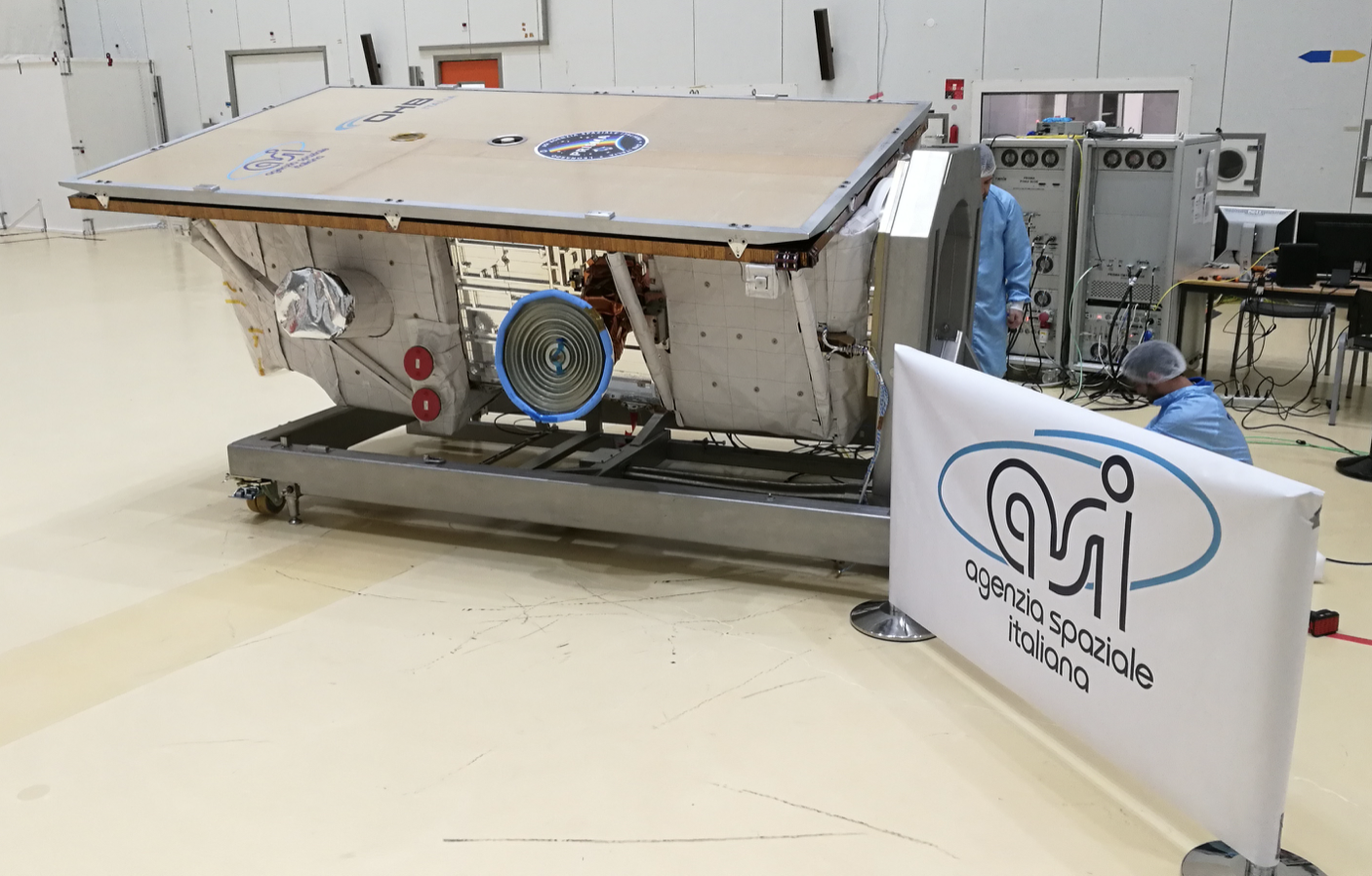
Due to additional checks for Arianespace’s VV14 mission – which initially was scheduled on March 14 from the Guiana Space Center (CSG) – the flight has been postponed by several days. The new targeted launch date for the PRISMA satellite is Thursday, March 21, 2019 at exactly 8:50:35 p.m., in Washington, D.C.
Both the Vega launch vehicle and the PRISMA spacecraft are in stable and safe conditions.


The PRISMA mission can operate in two modes, a primary mode and a secondary mode. The primary mode of operation is the collection of hyperspectral and panchromatic data from specific individual targets requested by end users. In the secondary mode of operation, the mission will have an established ongoing ‘background’ task that will acquire imagery such that the satellite and downlink resources are fully used.
The PRISMA system includes Ground and Space facilities able to perform all the functions requested to provide image acquisition planning on targets of interest, data acquisition and downloading to ground station, processing and products delivering to the end user. It provides the capability to acquire, downlink and archive images of all Hyperspectral/Panchromatic channels totaling 200,000 km2 daily over the the Primary Area of Interest defined as:
The expected performance and characteristics for the mission are the following:
- Acquisition capacity up to 223 images per day, with scene of 30 km x 30 km;
- Continuous strip acquisition capacity up to 1800km;
- Data acquisition, download and processing up to 0a level and storage of all data (hyperspectral/ panchromatic) up to a maximum of 200,000 km2 per day;
- Daily processing capacity of 200 hyperspectral images (30 km x 30 km) up to Level 2d (from data already in the archive).
- Target access opportunity on Area of Interest:
- Duration / day: 240 minutes number of orbits / day: 15
- Agility: the system is capable of acquiring images distant 1000km in a single pass (with a total rotation left to right side looking and viceversa).

